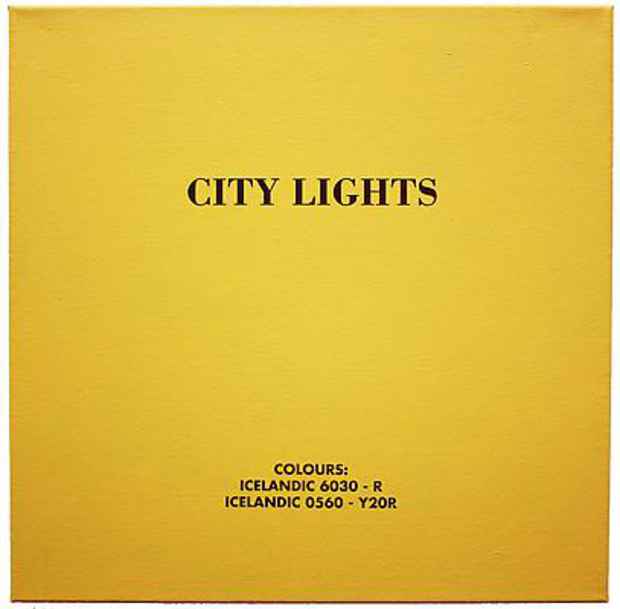Birgir Andrésson and Poul Gernes "Bolt Out of the Blue'
Sean Kelly Gallery

This event has ended.
Bolt Out of the Blue includes a diverse group of works by two of the most influential and groundbreaking contemporary Nordic artists. Whilst formally different in execution, both Andrésson and Gernes operated firmly within the tenets of Conceptual and postmodern strategies.
Andrésson, born in Iceland to blind parents and raised in a home for the blind, developed a powerful and poignant relationship with both verbal and visual forms of communication from the outset. His unique insight into how people interact had a profound and defining impact on the role of language in his art. Rigorously parsing his imagery of extraneous detail, the mechanical appearance of works such as his Portraits demands that the viewer bridge the “fourth wall” between them and the work. In lieu of pictorial references, these portraits contain only descriptive text; viewers are expected to call up their own images of the individuals “painted” by Andrésson. In many of his works, Andrésson created a fictional Icelandic color system – Pantone formulas supposedly derived from colors found in the natural environment. Andrésson’s language can either be purely descriptive, or cryptic and inscrutable, but in most cases the text is suffused with the artist’s trademark wry humor. Two of Andrésson’s expansive site-specific wall paintings are included in the exhibition (the show’s title is derived from one), as well as works on paper from the Noise from the Dictionary series, in which the artist represents written words in their phonetically spelled form.
Gernes eschewed a traditional family life and notions of a formal studio environment, painting instead at his kitchen table. This exhibition includes early, historically significant works from some of Gernes’s most important series, including the stripe and dot paintings. These paintings, rarely exhibited in the U.S., are shown here in great depth for the first time. The stripe and dot series, both from the 1960s, consist of seemingly endless color combinations. Using only industrially available paint and masonite as the support, these paintings suggest the more mechanical qualities of abstraction in their random variations, but actually have a unique sense of the artist’s hand at work. This randomness is seen not just in the execution of the paintings, but also in their display; Gernes insisted that there were no prescriptions for their arrangement or sequence, allowing patterns or rhythms to develop by chance. A contemporary of Joseph Beuys, Gernes – whose work was featured in a Beuys performance in 1966 – was cognizant of the German artist’s theory of “social sculpture” and an artist’s opportunity to be an agent of transformation within society. By 1980, Gernes had increasingly focused on developing color systems to manipulate architectural spaces via commissions for various public and private institutions.
[Image: Birgir Andrésson "Black and White Classics in Icelandic Colours (City Lights)" (2007) oil on canvas 23 5/8 x 23 5/8 in.]
Media
Schedule
from June 24, 2011 to July 29, 2011
Opening Reception on 2011-06-23 from 18:00 to 20:00